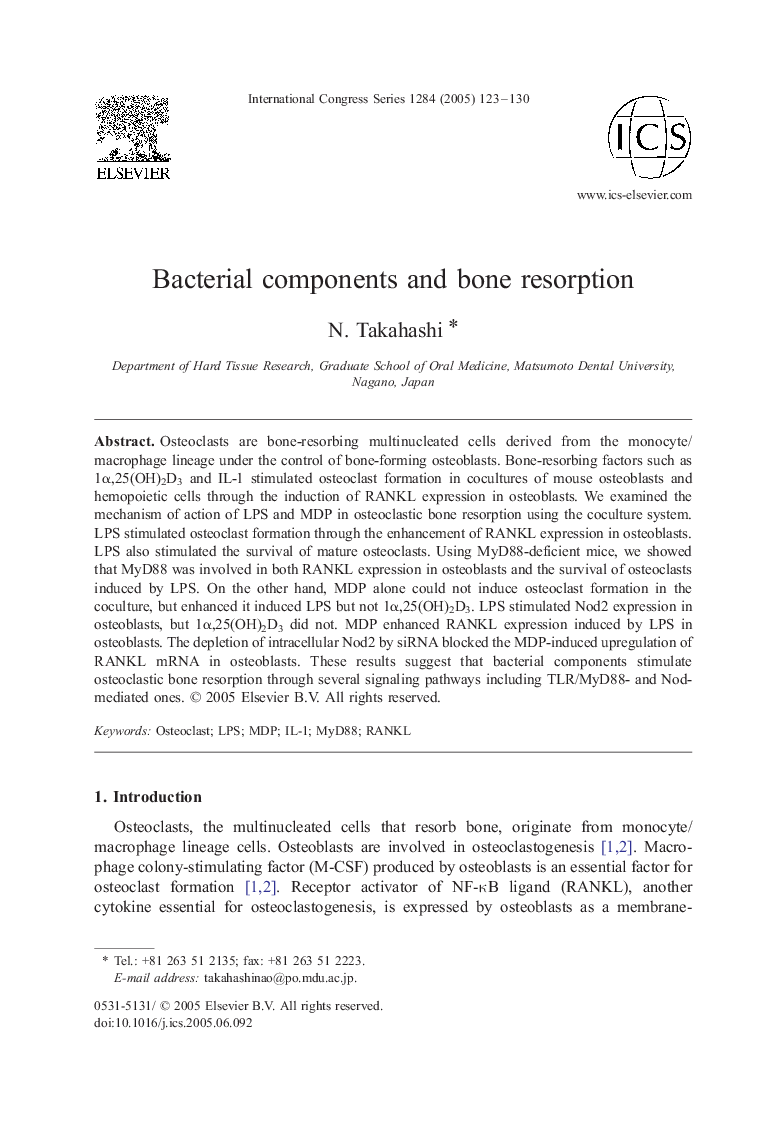| Article ID | Journal | Published Year | Pages | File Type |
|---|---|---|---|---|
| 9021365 | International Congress Series | 2005 | 8 Pages |
Abstract
Osteoclasts are bone-resorbing multinucleated cells derived from the monocyte/macrophage lineage under the control of bone-forming osteoblasts. Bone-resorbing factors such as 1α,25(OH)2D3 and IL-1 stimulated osteoclast formation in cocultures of mouse osteoblasts and hemopoietic cells through the induction of RANKL expression in osteoblasts. We examined the mechanism of action of LPS and MDP in osteoclastic bone resorption using the coculture system. LPS stimulated osteoclast formation through the enhancement of RANKL expression in osteoblasts. LPS also stimulated the survival of mature osteoclasts. Using MyD88-deficient mice, we showed that MyD88 was involved in both RANKL expression in osteoblasts and the survival of osteoclasts induced by LPS. On the other hand, MDP alone could not induce osteoclast formation in the coculture, but enhanced it induced LPS but not 1α,25(OH)2D3. LPS stimulated Nod2 expression in osteoblasts, but 1α,25(OH)2D3 did not. MDP enhanced RANKL expression induced by LPS in osteoblasts. The depletion of intracellular Nod2 by siRNA blocked the MDP-induced upregulation of RANKL mRNA in osteoblasts. These results suggest that bacterial components stimulate osteoclastic bone resorption through several signaling pathways including TLR/MyD88- and Nod-mediated ones.
Related Topics
Life Sciences
Biochemistry, Genetics and Molecular Biology
Molecular Biology
Authors
N. Takahashi,
